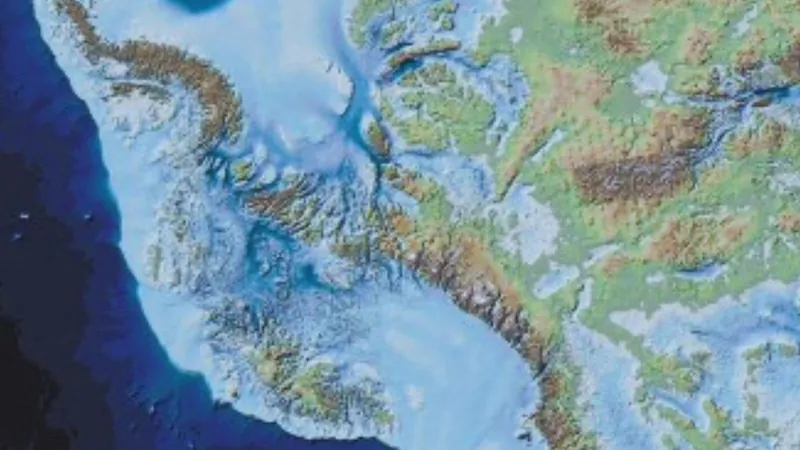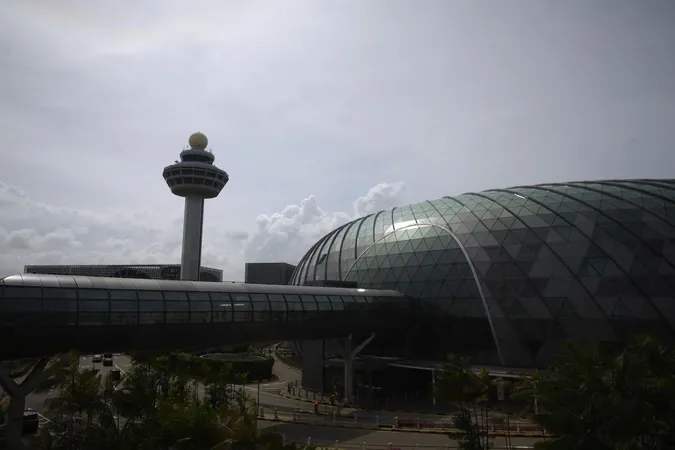
Unveiling Antarctica’s Hidden Treasures: What Lies Beneath 16,000 Feet of Ice?
2025-03-21
Author: Sarah
Recent groundbreaking research has transformed our understanding of Antarctica, revealing startling landscapes that have been hidden beneath 16,000 feet of ice for millennia. The advanced mapping project, known as Bedmap3, utilizes cutting-edge technology—combining radar, seismic reflection, and gravity measurements—to paint a detailed picture of the continent's subglacial topography.
This innovative map fills critical gaps in our knowledge, particularly in regions such as East Antarctica near the South Pole, the Antarctic Peninsula, the coastal areas of West Antarctica, and the formidable Transantarctic Mountains. For the first time, scientists can visualize a tangled world of deep valleys and towering mountains, all previously masked by the continent’s icy veneer. This newfound clarity reveals vital boundaries where ice meets the ocean, reshaping our understanding of the continent's icy architecture.
Among the many astonishing findings, researchers have ascertained that Antarctica’s immense ice sheet stretches over an area of approximately 13.63 million square kilometers, with an average thickness of nearly 1,948 meters. However, the real jaw-dropper is the discovery of an unnamed canyon in Wilkes Land, where the ice thickness reaches an astounding 4,757 meters, making it the thickest ice formation in the region. This detailed ice mapping not only unveils hidden geological marvels but also provides invaluable data to assess how ice dynamics could influence sea-level rise in the future.
Bedmap3 represents a significant evolution from its predecessors, Bedmap1 and Bedmap2, and offers a comprehensive dataset essential for understanding how Antarctica's icy surface reacts to climate change. As scientists delve into this rich repository of information, it promises to unlock the secrets of how ice interacts with the surrounding oceans, offering crucial insights into the continent's geological history and future trajectory amidst a warming climate.
This extraordinary blend of cutting-edge science and exploration is vital not just for understanding Antarctica’s past but also for safeguarding our planetary future. As we face a global climate crisis, the implications of this mapping effort could be monumental—what else might be lurking below the ice, waiting to reshape our understanding of this enigmatic continent? Stay tuned for more astonishing discoveries that could change everything we thought we knew about our planet's icy frontier!





 Brasil (PT)
Brasil (PT)
 Canada (EN)
Canada (EN)
 Chile (ES)
Chile (ES)
 Česko (CS)
Česko (CS)
 대한민국 (KO)
대한민국 (KO)
 España (ES)
España (ES)
 France (FR)
France (FR)
 Hong Kong (EN)
Hong Kong (EN)
 Italia (IT)
Italia (IT)
 日本 (JA)
日本 (JA)
 Magyarország (HU)
Magyarország (HU)
 Norge (NO)
Norge (NO)
 Polska (PL)
Polska (PL)
 Schweiz (DE)
Schweiz (DE)
 Singapore (EN)
Singapore (EN)
 Sverige (SV)
Sverige (SV)
 Suomi (FI)
Suomi (FI)
 Türkiye (TR)
Türkiye (TR)
 الإمارات العربية المتحدة (AR)
الإمارات العربية المتحدة (AR)